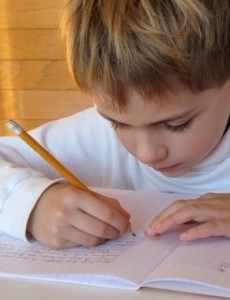
ADHD is the most commonly diagosed physiciatric disorder in children and is thought to affect between 3 and 5 percent of children world wide. ADD is one of the three subtypes of ADHD. So what are ADHD and ADD and what can be done to help children with this?
Attention deficit hyperactivity disorder (ADHD) is a developmental disorder where the child has problems with attention and hyperactivity. ADD (attention deficit disorder) is the term used to describe children who have difficulties with attention but are not hyperactive. ADHD is the term used when both attention and hyperactivity are a concern. “Developmental” means it begins in childhood and symptoms are present before the age of seven years. It is considered a “chronic” condition, meaning that the effects are long term with around half the people diagnosed having symptoms which continue in their teenage and adult years. It is more common in boys than in girls. Although there has been controversy about the diagnosis, cause and treatment of ADHD, most health professionals now consider it a true medical condition needing correct assessment, diagnosis and treatment.
There are three types of ADHD:
- Inattentive type (ADD)
- Hyperactive/impulsive type
- Mixed type
Signs and symptoms of inattention include:
- Easily distracted
- Missing or forgetting details
- Forgetting or losing things
- Switching quickly from task to another
- Finding it hard to focus on one thing
- Becoming quickly bored
- Difficulty with organization
- Finding it hard to finish things
- Difficulty listening or processing what is heard
- Appearing “dreamy” or “confused”
- Difficulty following instructions
Signs and symptoms of hyperactivity include:
- Fidgeting, wriggling, finding it hard to sit still
- Moving around quickly, flitting between activities
- Talking quickly and/or nonstop
- Excessively touching or fiddling with things
- Difficulty doing quiet tasks or activities
Signs and symptoms of impulsivity include:
- Impatience
- Blurting out comments without thinking
- Showing emotions without considering the effect on others
- Acting without considering consequences
- Difficulty waiting and taking turns
All people show some of these behaviours. In order to be diagnosed with ADD or ADHD the behaviours must be having a significant impact on the person’s ability to learn, work, or maintain relationships. Assessment should be conducted by a suitable qualified pediatrician or psychologist and must show that the behaviours have a significant impact on the person’s life in two different settings (such as home and school) over a period of at least six months.
Common questions:
If I think my child has ADHD or ADD what can I do? Discuss your concerns with your GP and ask them to refer you to a pediatrician or psychologist experienced in diagnosis or treating ADD/ADHD.
What can be done to help a child with ADD/ADHD?
Support can include behaviour modifications, lifestyle changes, counseling and medication and often a combination of strategies is most effective.
How can I help my child at home?
Ask questions to your child understand their own distractibility and impulsiveness. e.g. Did you remember to stop and listen carefully? • Help your child with strategies:
- stopping to think before answering
- reading instructions carefully
- listening carefully
- reminding themselves to concentrate
- taking breaks to move about when needed
What can help a child with ADD/ADHD in the classroom?
- alert the student if there is something coming up which requires a high level of concentration
- provide movement breaks between activities
- place the student in a seat close to the teacher
- keep the student’s working area clear from distractions
- speak slowly and quietly to bring an impulsive student down to a quieter, more reasonable level
- provide a ‘cooling down’ area for an impulsive student requiring some solitude to calm down
- offer the student a separate desk if needed to minimise distractions. Present this option in a positive way and allow the student to choose.
- break tasks into short manageable parts.
- give your student positive feedback for staying on task
- provide fun activities to practice ignoring distractions. Put students into pairs, one of the pair must concentrate on a simple task (such as a puzzle, or dot-to-dot) whilst the other student tries to distract the worker in any way possible without touching them. Reverse roles, and see who can last the longest without getting distracted
- teach your students that ‘fast’ or ‘first’ does not mean the ‘best’
- use a visual of a ‘pause button’ or ‘stop sign’ to remind the student to stop and think
- prepare cards with statements such as “you are working well”, “you stopped and thought” “you waited your turn”. Give these cards to your students when appropriate and allow them to trade for a small reward
- have fun ‘stop and think’ activities. Ask your class a series of simple yes/ no answer questions. However, the trick is the students must wait five seconds before answering. If they answer in less than five seconds they are out of the game
For further information about ADHD and ADD visit:
- Talking Matters website for a printable handout
- The National Institute of Mental Health
- Australian Psychological Society
Related Blog Posts
If you liked this post you may also like:
Superpowers at home
Holiday fun!
Tips for handwriting
Reading Skills



